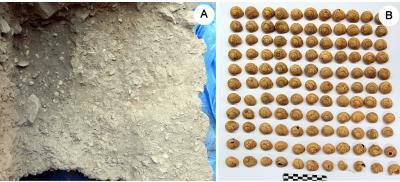The Paleolithic inhabitants of modern-day Spain may have eaten snails 30,000 years ago - 10,000 years earlier than their Mediterranean neighbors, according to a recent paper.
Snails were widespread in the Late Pleistocene and Holocene, but it is still unknown when and how they were incorporated into human diets. The answer has been narrowed a little. The authors of a new study found land snail shell remains from about 30,000 years ago at a recently discovered site in Cova de la Barriada, Spain.
To better understand if the inhabitants may have eaten snails, the researchers investigated patterns of land snail selection, consumption, and accumulation at the site, and then analyzed the shells' decay, fossilization process, composition, and age at death by measuring the shell size.

This image depicts Upper Palaeolithic combustion structure containing human collected and cooked land snails and carbonaceous sediments (A) and complete land snails recovered into the combustion structure BM (B). Credit: Fernández-López de Pablo et al.)
Scientists found groupings of complete shells from a large land snail species at three areas of the site, corresponding to different time points ~30,000 years ago.
The adult snails were close to prehistoric human-constructed structures that may have been used to cook the snails, along with stone tools, and other animal remains that were likely roasted in ambers of pine and juniper at 375 C.
The authors posit that these results point to previously undiscovered patterns of invertebrate use and may highlight a broadening of the human diet in the Upper Paleolithic in the Mediterranean basin.
In neighboring Mediterranean areas, eating land snails didn't appear until about 10,000 years later, which may make these newly found snail shells the oldest known evidence that ancient human populations used them as a food resource in Europe ~30,000 years ago.






Comments